This post may contain affiliate links. Please read our disclosure.
If you have diabetes, your doctor may have advised you to wear protective footwear.
Complications from foot injuries can be fatal in those living with diabetes, which is why it’s so important to defend against foot injuries whenever possible.
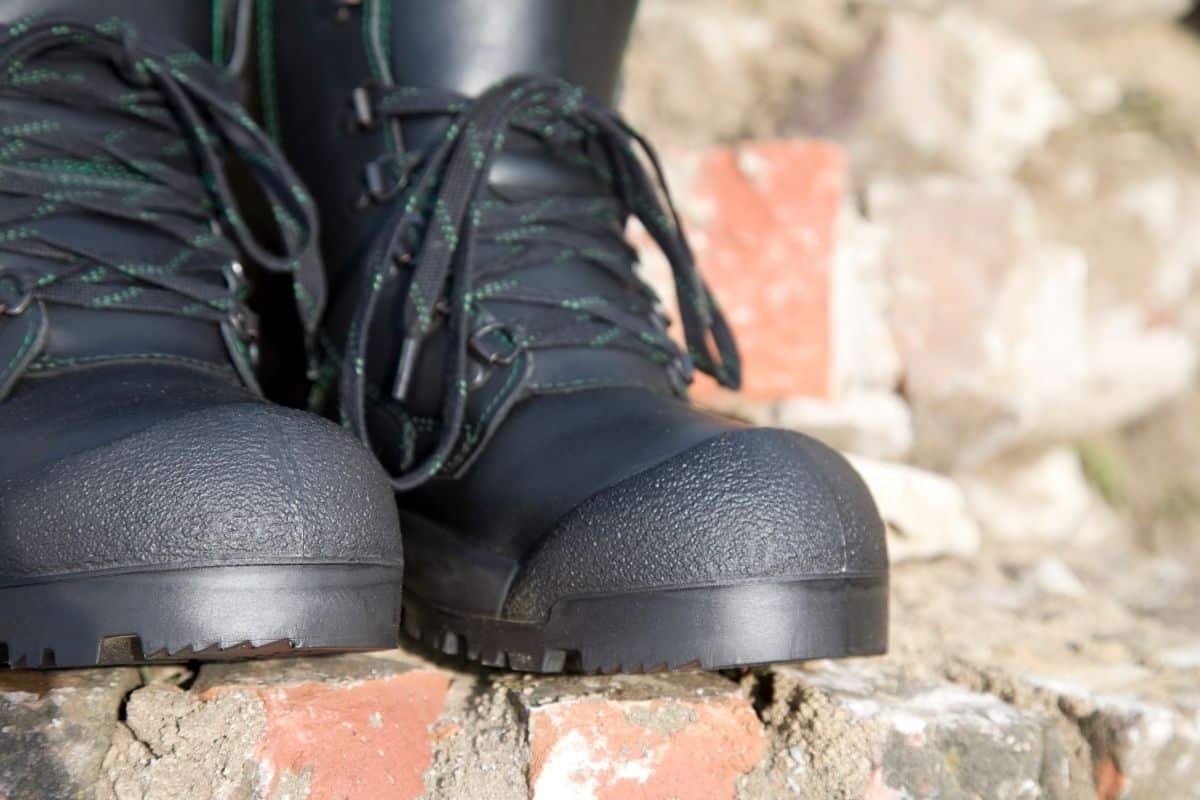
For instance, if a person with diabetes works on a building site, they are at greater risk of heavy tools dropping and damaging their feet. One way of shielding the feet from harm is by wearing steel-toed work boots.
The steel toes also help protect against toe injuries from falls, cuts, and burns.
There are many steel-toed work boots available to purchase, which can make it difficult to know which ones you should choose.
To make this choice slightly easier, we’ve researched for you and found the best diabetic work boots with safety steel toes below.
You’ll also find a buying guide that’s full of advice on what people living with diabetes should look for when selecting a steel-toed work boot.
However, steel-toed boots can also cause unwanted side effects that you need to be aware of and you will need to take certain precautions when wearing them.
You’ll find these precautions in our buying guide, along with some common questions and answers about steel-toed work boots for people with diabetes.
The best diabetic work boots with safety steel toes
These boots from Skechers are made from aesthetically pleasing leather that matches a range of work uniforms.
Despite being equipped with steel toes, the boots are lightweight and comfortable on the feet.
Memory foam insoles will keep your feet comfy during long hours on your feet.
The padded collar keeps your upper foot area safe from falling objects, while the padding itself prevents your skin from rubbing against the inner lining.
There's plenty of room in the toe box for your toes to spread out, but this also means you can wear thicker socks without any issues.
The leather provides light protection against moisture, though you can get the leather treated if you'd prefer them to be completely waterproof.
- Steel toes - Can withstand pressure from falling/rolling items
- Memory foam insole - Keeps feet comfortable for long hours
- Roomy toe area - Prevents toes from squeezing against the shoe
- Leather isn't 100% waterproof
The Oristaco work boots are constructed with a steel toe cap and a non-slip tread pattern. This combination provides excellent traction and stability, while their breathable upper lining allows air to circulate through the foot.
This style of boot has a memory foam insole that offers extra comfort and support.
Their lightweight knit material is ideal for those who dislike heavy work boots, as they weigh just under 2 pounds.
The boots also have a heel counter and a puncture-resistant midsole.
They're available in both men's and women's sizes, so everyone can find a size that fits perfectly.
- Heel Counter - Provides added stability
- Non-Slip rubber sole - Prevents slips and falls
- Lightweight - Great for people who don't like wearing heavy work boots
- Synthetic material isn't the best for wicking away moisture
These boots are made with COOLMAX technology that's designed to wick moisture away from the skin.
They also have a static dissipative outsole. This will allow static electricity to flow into the ground rather than build up on the surface of the soles.
They have an anti-fatigue memory sole that cushions and supports the feet, allowing the wearer to stay comfortable all day long.
The slip-on design can be put on and taken off easily.
These boots can be worn at work and won't look out of place when out and about.
- Anti-fatigue memory sole - Keeps feet comfortable throughout the day
- Coolmax Technology - Wicks moisture away from the feet
- Static dissipative outsole - Prevents electric shocks
- Not much protective padding in the upper area
The boots also meet ANSI safety standards, making them suitable for a variety of industries including mining, manufacturing, and construction.
Timberland's Comfort Suspension technology makes the boot more comfortable than other similar shoes.
The rubber sole and cushioning keep the foot arch supported, while also keeping the feet from tiring out during the day.
The leather outer material repels water well, and the rubber sole prevents the wearer from slipping and falling.
- Meets ANSI safety regulations - Trustworthy protective boots
- Cushioning midsole - Supports the arch of the foot and cushions the midfoot from strikes
- Stylish design - Won't look out of place at home or work
- The upper area doesn't have much protective padding.
These work boots feature a tough rubber sole that protects your feet from slipping or sliding, while the steel toes offer extra protection against injury.
They are designed to be worn by construction workers, so expect them to be heavy-duty.
The steel toes themselves have space for the toes to move without squeezing against the shoe.
The steel toes cover the whole toe area, making sure there is no risk of injuring yourself. These boots also have a pliable anti-puncture Kevlar pad.
The midsole is soft and bendable so the foot can move with ease, while the Kevlar itself defends against punctures and injuries.
There's also a reflective tape around the outside, which is ideal for those working in low-light conditions.
- Pliable anti-puncture material - Protects the feet from injuries and allows feet to move freely
- Reflective tape - Reflects light in the dark for added safety
- Steel toes - Protects toes against injury
- The steel plate middle layer may be uncomfortable for some
Steel-toed work boots buying guide
The Occupational Safety and Health Administration orders that everyone that works in dangerous settings needs to wear safety work shoes to avoid foot injuries.
Workers are told to wear safety footwear if the following circumstances have any chance of occurring:
- Rolling or falling objects
- Contact with electrical hazards
- Near or around dangerous sharp objects
This footwear will also need to obey the American Society for Testing and Materials’ regulations that state that work-appropriate footwear needs to be able to withstand impact and compression.
The footwear also needs to pass a conductance test to ensure the shoes can sufficiently protect the bones between the ankle and the toes, as well as defend against electric shocks and static.
Steel-toed work boots advantages
Wearing steel-toed work boots has several advantages.
Steel-toed boots are designed to withstand 75lbs of load, so they will defend the feet against weighty rolling or falling items.
The boots have soleplate reinforcement to defend against sharp items that may cut or stab the feet.
As the boots have a steel lining, they are heavy and will grip tightly against the feet.
Reinforced toe boots are generally waterproof, an important point for people with diabetes that need to keep their feet dry.
Steel-toed work boots disadvantages
Steel-toed work boots may have several benefits, but they do come with drawbacks too.
Reinforced toe boots are lined with steel, which is heavy. This can make the boots cumbersome to wear, which isn’t very comfortable.
Steel caps may absorb the impact of rolling or falling items, but the shoes might warp after the strike.
If the object applied enough pressure, the caps may puncture the skin and cause injury.
Steel conducts both cold and heat, which means steel caps won’t insulate fully during hot or cold months. Instead, the steel caps may conduct the cold or heat from the external environment into the feet.
Is it recommended for diabetics to wear steel-toed work boots?
Steel-toed boots do provide most of the necessary protection diabetic footwear needs, except for a few features. These are:
- They don’t fully protect against electric shocks
- Won’t deliver effective insulation in cold or hotter weather.
- The impact may lead to steel puncturing the toe, though this is only in extreme cases.
Other than these points, steel-toed footwear can be an effective way for diabetics to protect their feet, especially those that work in potentially hazardous conditions.
However, you should always talk to your doctor or a medical professional before wearing these boots, especially if you live with the following diabetes-related terms:
- Feet that are always swollen.
- Live with a chronic injury or cut that won’t heal.
- Feet that are prone to blisters and calluses.
Things to consider when choosing diabetic work boots
Now that we’ve covered the advantages and disadvantages of steel-toed boots, here are the features that diabetic footwear needs to have:
- More room in the toe area for the toes to move freely.
- Made from protective materials, particularly in the toe area.
- Made from shock-absorbent materials.
- Protect against electrical shocks.
- A defensive metal plate inside the sole.
- Made from moisture-wicking fabric for good breathability.
- A dense heel cup that lets the heels fully relax.
- Cushioning padding in the insole to soothe the feet.
- Made from waterproof materials.
- Free from interior seams to avoid blisters forming.
- A supportive midsole and ankle area.
- Fully slip-resistant.
People with diabetes will all have differences in the condition of their feet, but here are some general things to look out for in diabetic work boots.
Heel height
If you don’t have foot issues like hammertoes, bunions, or issues with your foot bones, you may find that good-quality walking shoes are fine to work in.
However, every diabetes patient should make sure that these shoes don’t have a heel over two inches high and that the exterior sole is made from a soft fabric. The optimum heel height for diabetic footwear is under 3/4 of an inch.
People with diabetes should also stay away from flimsy leather soles, as these won’t provide sufficient protection for the underside of your feet.
More depth
Everyone’s feet swell throughout the day, not just those with diabetes.
Go for work footwear that lets you loosen their fit, in case your feet swell up over a few hours. Buying work boots with extra depth can also help.
More room around the feet means that your feet won’t be squeezed tightly inside the boot, allowing blood to circulate freely.
Diabetic work boots are usually available in two kinds of depth. These are extra depth, 1/4 inch, and super depth, 1/2 inch.
Look out for laces and velcro closures too, but make sure you try on new shoes later in the afternoon, as this will accommodate for any swelling.
Insoles and inserts
People who live with neuropathy may find that their footwear feels larger, even if you go for a smaller size.
You may find relief by obtaining a prescription insole for these shoes. In most cases, people who require more padding will do well with a flatter insole.
These will have roughly 1/8 to 1/4 inches of filling, but make sure you change this insole every 6 months.
Neuropathy patients may also find that orthopedic inserts relieve some of their pain. These items are designed to alter the way the foot hits the floor.
This makes everyday actions, like walking and running, more comfortable.
You’ll be able to obtain an orthotic insert by consulting a qualified foot care provider.
Absorbent lining
A moisture-wicking lining inside the toe area is an important thing to look out for.
People with diabetes need to remove moisture buildup between the toes as this can lead to infections that are harder to heal.
If water gets inside your work boot, a moisture-wicking lining will absorb the moisture, so it doesn’t affect your feet.
Foam padded collars
A foam-padded collar is also ideal if you work in a hazardous environment.
This will defend your foot’s upper area against nails, slips, and falling tools puncturing your feet.
The collar will also take in any pressure from heavy loads, like bricks or sandbags.
Professional fitting
Feet don’t stay the same throughout our lives; their form, size, and shape will change over the years.
Ensure that your feet are measured by a sales professional every time you go shoe shopping, especially if you haven’t bought new shoes in a while.
You need to choose the right shoes for your condition.
If you’re unsure about your purchase, you can consult a health professional that understands diabetic foot care to check their fit.
What if you have diabetic foot issues?
Choosing the right footwear can be a problem if you live with current foot issues.
If these conditions aren’t serious, you might need a slight adjustment, such as more depth within the toe space.
However, if your foot issues are more serious, you may need to purchase proper diabetic work shoes with special features.
These may have flexible material that stretches with your feet. Higher-end options may be molded specifically to your foot shape.
People with diabetic foot issues will also need to obtain specific insoles that are 3/4 of an inch dense.
Those that feel pain or pressure when walking may also need a rolling exterior sole that cushions painful areas.
If your doctor states that you need specific footwear due to your diabetes, Medicare will usually cover the cost, paying for a single pair of shoes each year.
This coverage will depend on a few factors, including whether you live with the following conditions:
- Complete or partial foot amputation
- Foot ulcers
- Calluses from the past that may have led to ulcers
- Nerve damage in the lower extremities and foot calluses
- Reduced blood flow within the feet and legs
- Feet abnormalities
All diabetic work boots should fit well from the second you first wear them. However, you should still take the time to gradually break them in, even if they do feel comfortable.
Begin by wearing the shoes for an hour in the morning, then another hour in the afternoon/evening for three days.
You can then add more hours until you’ve worked up to the amount of time you would normally wear the shoes.
Foot specialists recommend that you should have two pairs of shoes on hand during the break-in process, as this lets you change your shoes once every day.
If you do need to change your shoes, take off your socks and examine your feet for any sore or red areas. If any red spots don’t go away within 15 minutes, talk to a podiatrist for a shoe assessment.
One of the leading causes of amputation is foot ulcers triggered by wearing ill-fitting work shoes.
Rules for wearing diabetic work boots
Here are some things you should do and shouldn’t do when wearing diabetic work boots.
Always wear the right size
Shoes that are too loose around your feet can obstruct your legs from moving naturally, leading to injuries later.
You should also avoid footwear that’s too tight, as these can keep rubbing against the skin, leading to bruises, blisters, and calluses.
These wounds can take a long time to heal for those living with diabetes.
Don’t wear synthetic fabrics
Artificial materials like plastic, PVC, and polyester won’t let air flow freely within the shoes, leading to sweat and heat building up inside the boots.
People with diabetes need to avoid moisture buildup, as this can cause hard-to-heal infections on the feet.
It’s best to avoid shoes that have a synthetic material lining.
Avoid shoes that aren’t cushioned
Padding and cushioning protect against friction, as it stops your skin from rubbing against the work boot’s inner lining.
A work boot may have a nice design, but if they don’t have a cushion on the inner sole and tongue, they should be avoided at all costs.
Always replace worn-out shoes
As shoes get older, they start to wear down, meaning they won’t be able to sufficiently protect your feet as they once did.
The inner soles, outer collars, and the inside lining will all start to deteriorate over time.
This can increase the risk of falls, cuts from sharp tools, and blisters from the materials rubbing against the skin.
Always wear socks
Wearing socks with your work boots is one of the best ways to prevent your feet from growing blisters.
Socks will absorb any moisture, reduce pressure, and act as a light padding for your feet. They can also defend your skin from friction against the boot’s inside lining.
Never wear heeled boots
High heels will cause more pressure on the balls and toes of your feet. More pressure on these supportive areas can cause swelling, which then leads to calluses.
Furthermore, if you live with neuropathy, your nerve damage may be responsible for balance issues.
Heels and poor balance increase the risk of injury from falls, so you’ll want to avoid heels at all costs.
Frequently asked questions
Do people with diabetes need special shoes?
People with diabetes need to ensure that their footwear is comfortable and fits well.
If the patient has diabetic-related foot issues, they should wear specially-made shoes that help defend against further injuries.
These may have more depth and padding to protect the feet.
If the patient works in a particularly hazardous environment, like a building site, diabetic work boots can help prevent ulcers, pain, and friction-related calluses.
Can diabetics wear steel-toed shoes?
Steel-toed boots can offer protection against falling and rolling items, but they can also be responsible for foot injuries.
People with diabetes can wear steel-toed boots, but they need to take certain precautions beforehand.
Make sure that the boots’ toe box is roomy enough so the toes can spread freely.
They should also wear thick socks to defend against the steel’s hard surface.
How can I make my footwear last longer?
People with diabetes need to avoid worn-out or old footwear, as these don’t protect the feet well.
You can make your shoes last longer by always wearing socks with your shoes, as this will absorb any moisture.
Always ventilate your shoes after wearing them. Loosen the laces or straps, allowing fresh air to circulate through the materials.
You can also spray your shoes with a waterproof spray, as this will protect the outer shoe from liquids, rain, and spills.
Other products that will help protect your feet
We have reviewed several other products that can help protect your feet and keep them healthy.

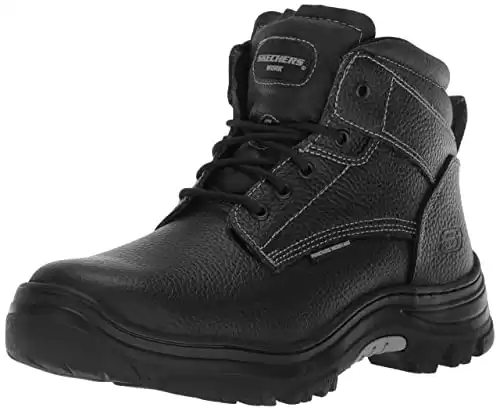
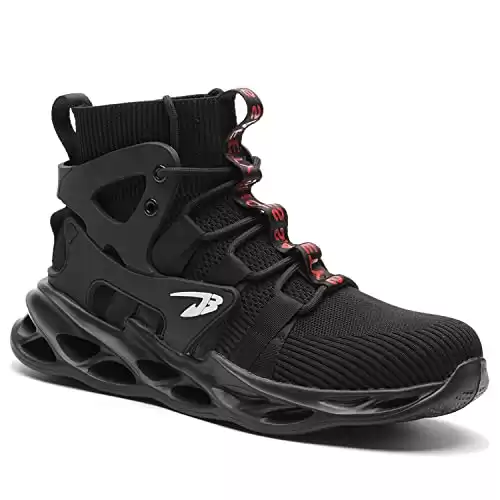

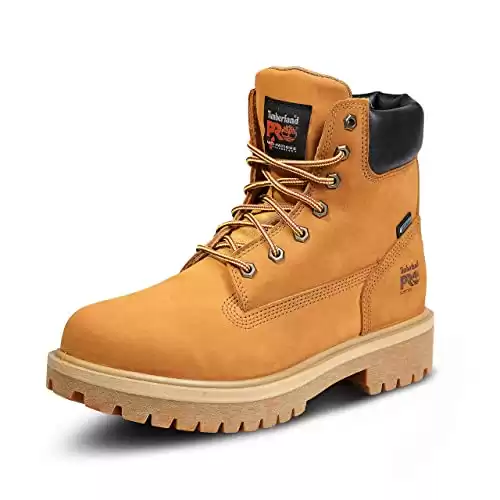
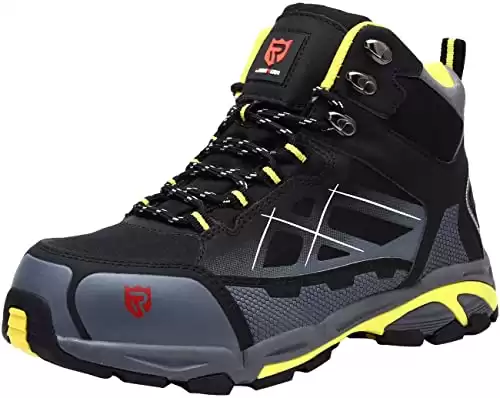



D.B.
I notice there was not a boot made by Danner on the list. My guys have always found Danner boots to be the most comfortable, they last well and also offer steel and composite toe options. Have you looked at boots made by them?
Ultrashielx
Thanks for sharing a lot of knowledge